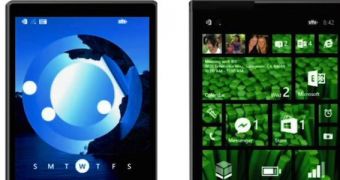The fact that the next Microsoft flagship smartphone will include the company’s innovative 3D Touch technology is no news anymore, given the fact that that we have already reported on the Nokia McLaren a couple of times over the last week.
Previously known as Nokia Goldfinger, the McLaren is the first smartphone to include Microsoft’s 3D Touch technology and it is slated for a November released in the United States.
However, aside from the fact that it will be picked by three major US-based carriers (AT&T, T-Mobile and Verizon), Nokia McLaren will be released worldwide later this year.
According to The Verge’s Tom Warren, Microsoft plans to include its 3D Touch technology into many of its high-end smartphones, if the McLaren proves a success.
It appears that the 3D Touch, also known as Real Motion, has been in development at Nokia for a couple of years, and Microsoft took over from the Finnish company to try to adapt the technology to its Windows Phone handsets.
Speaking of which, the 3D Touch technology will be included solely in Windows Phone handsets released by Microsoft, but there’s a possibility that it will be made available for other smartphones manufactured by HTC, Samsung and other OEMs in the future.
The 3D Touch technology is meant to replace the buttons in a smartphone, be it physical or touch buttons. With this type of technology integrated into a smartphone, users will be able to make use of gestures to execute various operations like answering or silencing a phone call, or dismissing alerts with a wave of a hand.
Another interesting use of 3D Touch technology is the ability to detect how the phone is held by grip, so that it would allow users to power it on by gripping the phone.
Nokia McLaren is also said to be the rightful successor of the Lumia 1020, which means that it will come with a powerful module camera. Well, it looks like Microsoft is looking into ways to control some of the camera’s features by gestures.
One such gesture, which might or might not be available in the McLaren, is revealed by The Verge. Apparently, you will be able to zoom in and out by moving your fingers along the side of the smartphone.
All these gesture-like commands will be possible thanks to a set of sensors that will be included in the future Windows Phone handsets.
But there will be other uses for the 3D Touch technology as well. As revealed by WPCentral’s Daniel Rubino, Nokia McLaren is supposed to feature some UX improvements in the form of something called MixView.
MixView allows users to hover their fingers over a Live Tile and tap on it while still in the air, in order to receive relevant info about that certain app in the form of additional smaller tiles that can be tapped as well.
The concept is said to be taken from the now defunct Zune MixView feature and it is meant to provide users with a quicker and smoother way to operate some of the most popular Windows Phone applications and services.
Even though all these details sound amazing in theory, it remains to be seen how effective they will be when put to the test on a real device and in real life. Stay tuned for more updates on Microsoft’s next Windows Phone devices.

 14 DAY TRIAL //
14 DAY TRIAL //